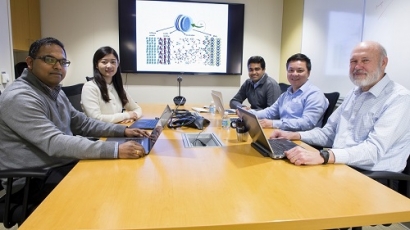
As reported in the journal Nature, the researchers have produced a new design for a battery cell that operates by running on air (hence, referred to as “lithium-air”) over many charge and discharge cycles. Larry Curtiss, co-principal investigator and Argonne Distinguished Fellow, observed that the team’s article was appealing to Nature because “others have tried to build lithium-air battery cells that run on air, but they failed because of little cycle life.”
Lithium-air batteries are believed to be able to hold up to five times more energy than the lithium-ion batteries. They have been tantalizing battery researchers for years but several obstacles have stood in the way of their development.
The problem with past technology has been that battery cells tested in the lab required a separate supply of pure oxygen. As a result, a tank of oxygen gas would have to be part of the battery system, making it dangerous and prohibitive for possible use in electric vehicles. A lithium-air battery that uses air from outside eliminates this problem.
“Our lithium-air battery design represents a revolution in the battery community,” said Amin Salehi-Khojin, assistant professor of mechanical and industrial engineering and co-corresponding author of the paper. “This first demonstration of a true lithium-air battery is an important step toward what we call ‘beyond lithium-ion’ batteries, but we have more work to do in order to commercialize it.”
The key features of the team’s battery cell are a new protective coating for the lithium metal anode, which prevents the anode from reacting with oxygen and hence deteriorating, and a novel electrolyte mixture that allows the cell to operate in an air atmosphere. In tests under an air environment, this cell maintained high performance during 700 cycles, far surpassing previous technology.
According to Salehi-Khojin, “The energy storage capacity was about three times that of a lithium-ion battery, and five times should be easily possible with continued research. This first demonstration of a true lithium-air battery is an important step toward what we call beyond-lithium-ion batteries.”
The UIC team built, tested, analyzed and characterized the battery cells. The Argonne group, together with colleagues at UIC and California State University, carried out the computational analyses.
Important to the project’s success was the use of the Argonne Leadership Computing Facility and the Center for Nanoscale Materials for high-performance computing. The ALCF and CNM are DOE Office of Science User Facilities, both located at Argonne. Equally instrumental was the Research Resources Center at the University of Illinois at Chicago.
Photo: Argonne team members (from left to right) Rajeev Assary, Cong Liu, Badri Narayanan, Anh Ngo and Larry Curtiss. (Argonne National Laboratory)

